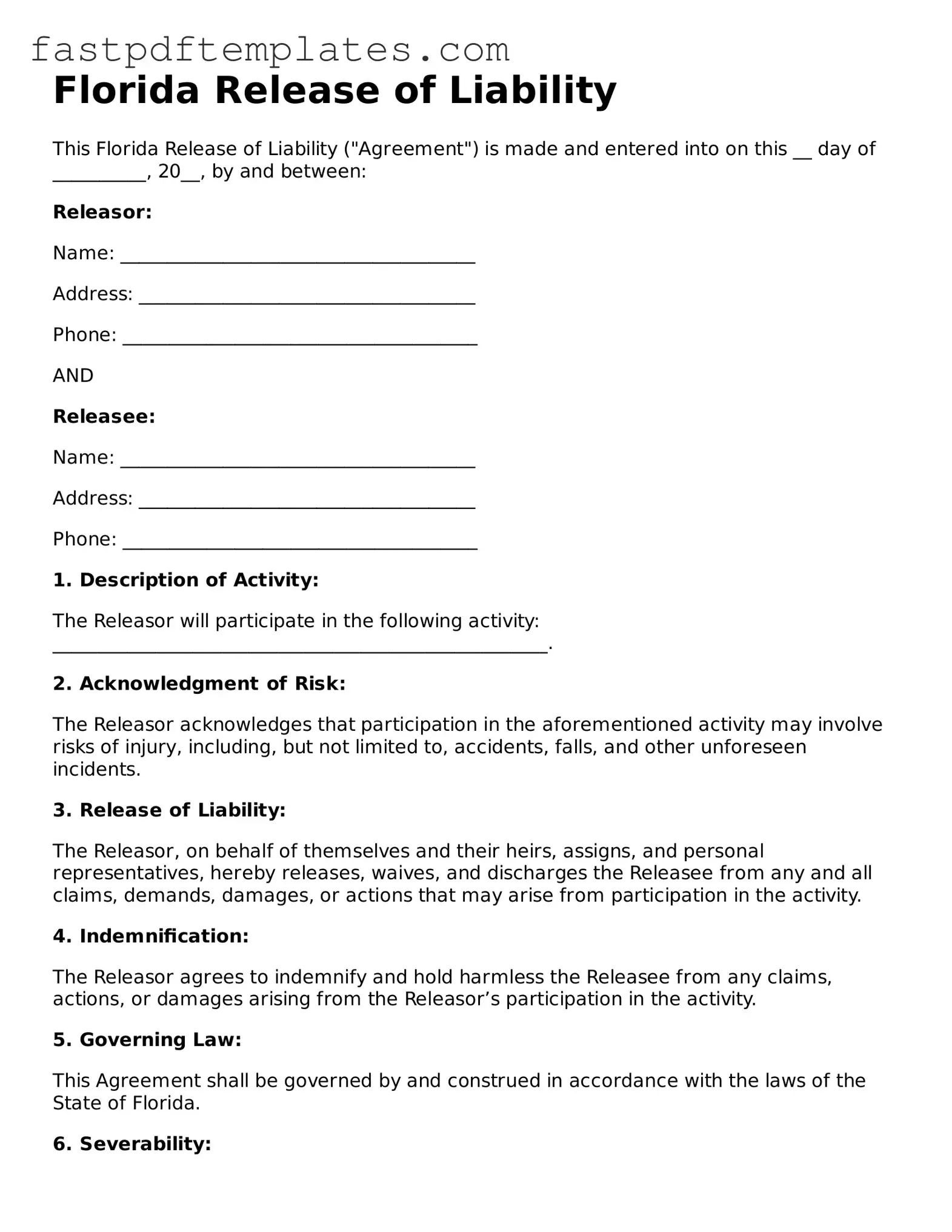Florida Release of Liability
This Florida Release of Liability ("Agreement") is made and entered into on this __ day of __________, 20__, by and between:
Releasor:
Name: ______________________________________
Address: ____________________________________
Phone: ______________________________________
AND
Releasee:
Name: ______________________________________
Address: ____________________________________
Phone: ______________________________________
1. Description of Activity:
The Releasor will participate in the following activity: _____________________________________________________.
2. Acknowledgment of Risk:
The Releasor acknowledges that participation in the aforementioned activity may involve risks of injury, including, but not limited to, accidents, falls, and other unforeseen incidents.
3. Release of Liability:
The Releasor, on behalf of themselves and their heirs, assigns, and personal representatives, hereby releases, waives, and discharges the Releasee from any and all claims, demands, damages, or actions that may arise from participation in the activity.
4. Indemnification:
The Releasor agrees to indemnify and hold harmless the Releasee from any claims, actions, or damages arising from the Releasor’s participation in the activity.
5. Governing Law:
This Agreement shall be governed by and construed in accordance with the laws of the State of Florida.
6. Severability:
If any provision of this Agreement is found to be unenforceable or invalid, the remaining provisions shall still be valid and enforceable.
7. Signatures:
The Releasor acknowledges that they have read this Agreement, understand its terms, and voluntarily agree to its conditions.
Signed:
_____________________________ (Releasor) Date: ___________
_____________________________ (Releasee) Date: ___________
